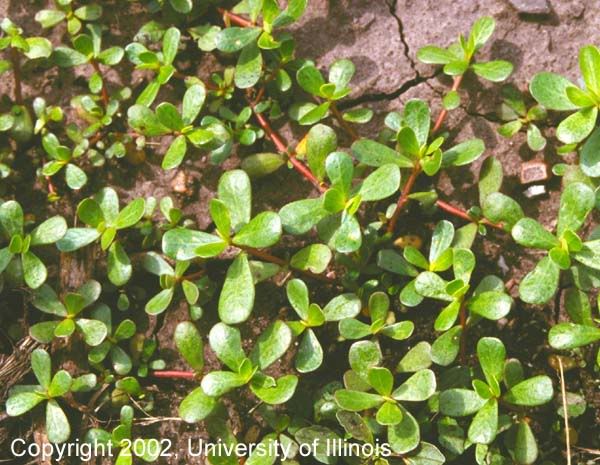Found this plant/weed in my yard and being curious wanted to find out what it was. Turns out it is considered a weed by many BUT it is also VERY GOOD for you.
Some pics...


Commonly found in gardens, flower beds, edges of yard and pastures. Google images of Purslane to make sure you get the right stuff. It can be dug and transplanted with little trouble. Reseeds itself.
What I had for lunch, fresh tomato cut up with some Purslane topped with some Ranch dressing...DELICIOUS!!!

It is incredibly crisp, like the freshest Iceberg lettuce you've ever had. The leaves have a slight lemony taste and the stem reminds me of very fresh, tender asparagus. I could not believe how good it tastes, no bitterness whatsoever. I will be eating more! More info on this "weed" below if you're interested.
Health benefits of Purslane... English name for purslane is "pigweed".
This plant...
Is very low in calories and fats; but is rich in dietary fiber, vitamins and minerals.
Can reduce the risk of coronary heart disease and stroke.
Can help with vision and skin health.
Can help with urinary tract infection and dysentery.
Is useful to relieve insect bits and sores on skin.
Complements the omega-6 fatty acids we get from grains and grain-fed meat.
? This wonderful green leafy vegetable is very low in calories (just 16 kcal/100g – 8 oz) and fats; but is rich in dietary fiber, vitamins and minerals.
? Fresh leaves contain surprisingly more Omega-3 fatty acids (?-linolenic acid) than any other leafy vegetable plant. 100 grams – 8 oz - of fresh purslane leaves provides about 350 mg of ?-linolenic acid. Research studies shows that consumption of foods rich in Omega-3 fatty acids may reduce the risk of coronary heart disease, stroke and also help prevent development of ADHD, autism, and other developmental differences in children.
? It is an excellent source of Vitamin A, (1320 IU/100 g, provides 44% of RDA) one of the highest among green leafy vegetables. Vitamin A is a known powerful natural antioxidant and is essential for vision. This vitamin is also required to maintain healthy mucus membranes and skin health. Consumption of natural vegetables and fruits rich in vitamin A known to help to protect from lung and oral cavity cancers.
? The plant is rich in vitamin E, vitamin C and beta carotene, and quite high in protein. Most noteworthy of all, it is considered a better source of essential omega-3 fatty acids than any other leafy plant. These are compounds the body cannot make itself, which are needed to complement the omega-6 fatty acids we get from grains and grain-fed meat.
? Purslane is also a rich source of some B-complex vitamins like riboflavin, niacin, pyridoxine and carotenoids, as well as dietary minerals, such as iron, magnesium, calcium, potassium and manganese.
? Also present in purslane are two types of betalain alkaloid pigments, the reddish beta-cyanins and the yellow beta-xanthins. Both of these pigment types are potent anti-oxidants and have been found to have anti-mutagenic properties in laboratory studies
? In Chinese traditional medicine, purslane plant is used to treat infection or bleeding in the urinary tract and dysentery. Plant is also useful to relieve insect bites or sores on the skin.
? Purslane grows just about anywhere from fertile garden soil to the poorest arid soils. A rock driveway is nirvana to purslane. It's succulent characteristic makes it very drought tolerant. Purslane prefers the fine textured soils of seedbeds as in vegetable gardens or open soil areas in paths. It doesn't germinate well when seeds are more than 1/2 inch deep. Tilling brings seeds to the surface where they quickly germinate. Mulching will help to control purslane. Purslane seeds germinate best with soil temperatures of 90 degrees so mulching may again help to control it. Since it germinates in high soil temperatures also means it doesn't appear until June.
? Eating Purslane: Delicious raw by itself or in a salad. Good in stir-fry. Can be used on a sandwich in place of lettuce or pickles.
? Raw, it has a light, lemony flavor. It's a nice addition to salads because it lends subtle flavor, texture variation, and nutrition, and unlike many edible weeds, it's not bitter!
About Purslane on You tube
http://www.youtube.com/watch?v=8tw8DcGAGmo















